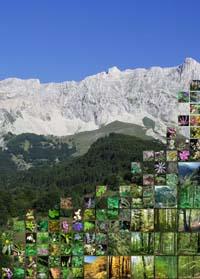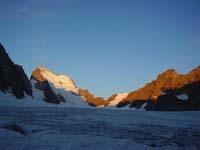Problems in the territory of Heidi

(Photo: Lenoir/ Science
Among other things, thanks to research published by the scientific journal Science, we have discovered that Heidi should climb the mountain to catch the flowers she previously collected. And because of global warming, XX. Since the beginning of the century, the optimal habitat of each species has risen an average of 29 meters per decade.
Herbaceous plants have also migrated faster than slow-growing species, especially those living in forests, than those growing elsewhere. That is, the basalors of the Alps have risen more and before many other species, so Heidi should sweat more in slope than in his day to form a bouquet of flowers.
Scientists are concerned about this phenomenon, as plant communities are breaking and will even affect interactions between animals and plants. In fact, there is no doubt that in the last hundred years there has been an increase in temperature in these areas, which has been accentuated since the 1980s, with an increase of almost 1 °C. And, according to climate models, in the coming years the trend will not change.
But scientists are not solely responsible for climate change and its consequences. Ski resort owners are also very concerned about thawing and decreasing snow. Customers, tourists and skiers fear losing them.
The measurements corroborate the suspicions of entrepreneurs and also discover that something strange is happening. According to the latest study by the Snow and Snow Research Institute in Switzerland, snow loss has not been progressive. They have measured snow falling in 34 ski resorts in Switzerland between 1930 and 2007 and have shown that snowfall has been reduced mostly from the late 1980s. The data is surprising, since greenhouse gas emissions have not experienced this change in this period, so it seems logical that there will be a decrease in the amount of snow, but without appreciable bloods from year to year.
Economic impact

Snow has been shown to be shrinking in the Alps, affecting not only ecology but also economy.
(Photo: A. Galarraga)
Scientists still do not know why it has stopped snowing sharply, but has a direct influence on ski resorts: Since the early 1990s, enough snow days for cross-country skiing and snowboarding have declined by 20-60%. The winter of 2006-2007 was especially bad in this regard, as there were plenty of sporting events to be abandoned and for an international ski competition in Austria they had to helicopter 4,500 cubic meters of snow to the competition area.
The costs are therefore increasing for the seasons, while revenues are being reduced, as many tourists and athletes choose other activities in the absence of snow. Therefore, to keep customers, ski resorts are diversifying their offer, for example, it is increasingly common for hotels to have spa services.
However, they also want to maintain snow-related activities, and some have tested original solutions. For example, part of the Swiss glacier Andermatt was protected to avoid melting the glacier with a special cover. The roof is formed by the company Landolt, whose bottom is polypropylene, which prevents the passage of heat. The top is white, like snow itself, of polyester reflecting ultraviolet rays. Thanks to the deck, the snow did not melt and skiers could enjoy.
But not everyone sees with good eyes this kind of solutions. They have shown that the cover prevents thawing of snow, but it is impossible to cover all glaciers and the Arctic and Antarctica. In addition, environmentalists in the Andermatt area have denounced that the initiative has not been contrary to global warming, but to the ski resort. According to environmentalists, the goal has been to attract skiers who go in cars and consume energy... And all this does not benefit the glacier, of course.
In fact, some scientists are very concerned about the environmental impact of snow sports. According to them, until 150 years ago, the mountains of the Alps were an inappropriate place to live, the conditions were too harsh. Now, however, they have become an ideal place for leisure and, for 50 years, infrastructures (roads, reservoirs, buildings...) and tourists have grown spectacularly. To the detriment of the environment.
As explained by Carmen de Jong, director of the Mountain Institute of the University of Savoya, “two phenomena have come together: the massification of mountains and climate change, which makes the pressure on mountain ecosystems greater than ever. Moreover, according to Jong, people will increasingly tend to approach the mountain to escape urban pollution and heat.
Therefore, it is urgent to seek solutions before the territory of Heidi disappears forever. It won't be an easy job!
Published in Gara
Buletina
Bidali zure helbide elektronikoa eta jaso asteroko buletina zure sarrera-ontzian











